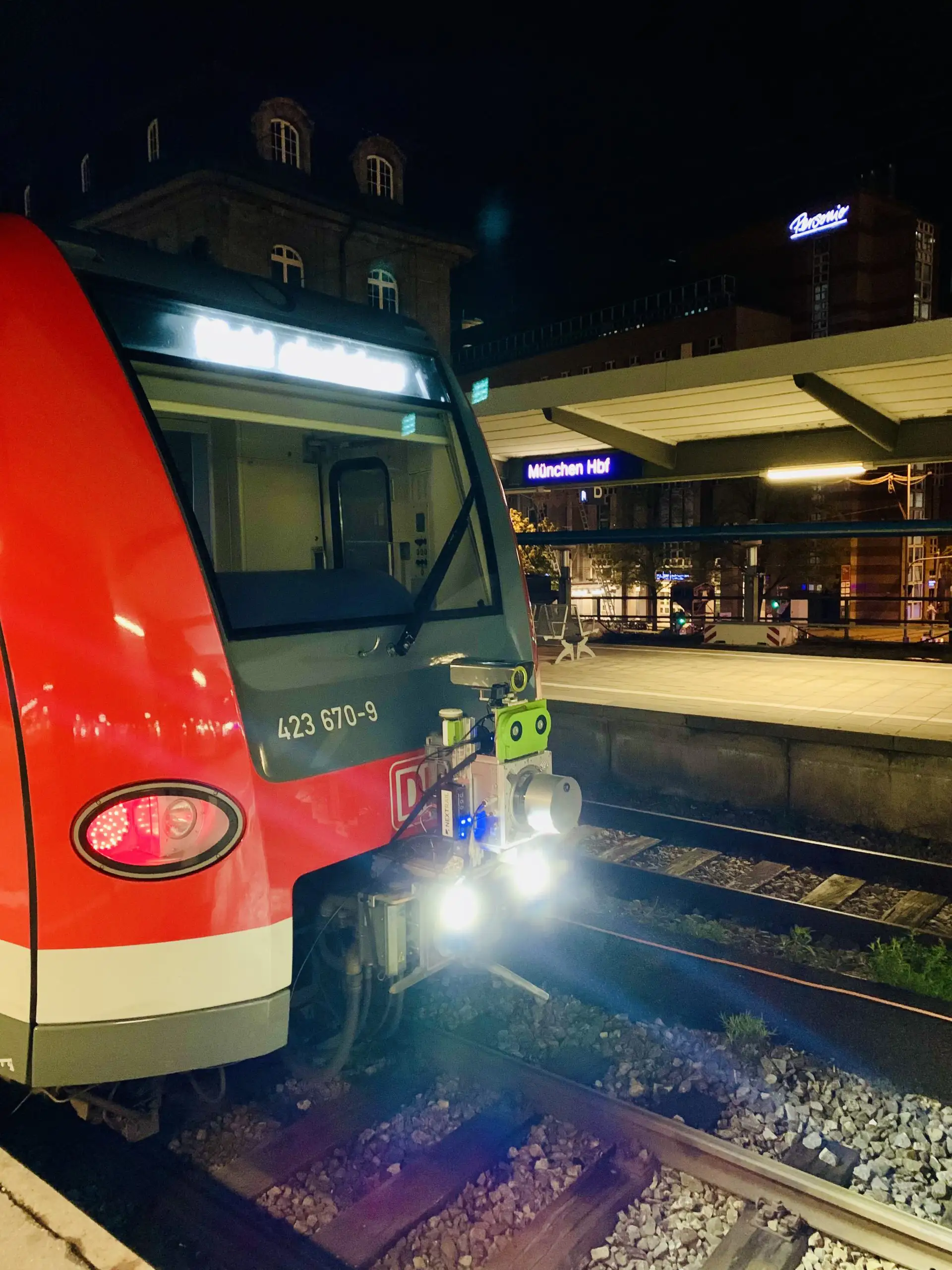

ETCS L2oS with ATO GoA2, FRMCS and DSTW increases capacity and improves operational quality
DB InfraGO AG and DB Regio commissioned NEXTRAIL to examine the feasibility of using ETCS Level 2 with ATO as part of the 2nd S-Bahn main line currently under construction in Munich and the imminent replacement of the continuous train control system (LZB) on the existing main line. The study focused in particular on gathering basic information, the 3D survey of the area of the scope using the TRAXIMIZER, the preliminary design including the optimization of block spacing, a railway operational study (EBWU), an operational simulation, the development of operational and technical requirements as well as a trackside and rolling stock migration concept for both S-Bahn main lines.
The EBWU and operational simulation demonstrated that ETCS Level 2 without lineside colour-light signals in conjunction with ATO achieves higher performance compared to the LZB. In addition, it was demonstrated that an extension of the ETCS/ATO fitted area beyond the current LZB fitted area to Pasing station and Westkreuz junction in the west and Ostbahnhof station, Leuchtenbergring station and Berg am Laim junction in the east would lead to further increases in capacity.
The technical requirements for the ETCS, ATO and DSTW systems and the new Future Railway Mobile Communication System (FRMCS) radio system were also developed and described. For the migration to the new technology, migration scenarios were developed for the trackside and for the rolling stock and the optimum migration path was determined.
Key areas of service
-
Technical project management and management of the working groups
-
Feasibility analysis of ETCS Level 2 without signals, ATO, DSTW and FRMCS
-
Investigation of the operational and technical targets
-
3D survey of the study area with the TRAXIMIZER
-
Gathering of basic information and preliminary design
-
Migration planning for trackside and vehicles
Special features
The main line of the Munich S-Bahn is one of the busiest S-Bahn lines in Germany. The task was to find an optimal migration path that would be carried out as far as possible under rolling wheels and with minimal need for track possessions. Several corresponding projects had to be taken into account, both on the main line and on the feeder lines.
The rolling stock migration concept also caused a major challenge. The train fleet of almost 250 train sets will be partially renewed and the new trains will already have the latest technology on board. However, a not inconsiderable proportion of the existing fleet will have to be released from ongoing operations and upgraded to the new technology, which also represents a major challenge. In order to train the operating and maintenance staff on the new technology and get them familiar with it, including over 750 train drivers, requirements for a pilot line outside the main line were prepared and proposals for a pilot line section in the Munich S-Bahn network were developed.
Contact person

